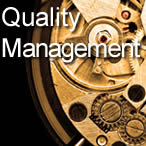Every Company Needs the Protection of a Policy & Procedures Manual
A comprehensive policy and procedures manual clarifies employee expectations about your business policies and communicates corporate standards of action and behaviour. The manual can also protect your company from possible legal action and exposure to employee fraud.
Every business needs a document that clearly details your rules, your regulations and how things should be done. This is especially true of one-owner businesses where the owner can be on vacation or ill and someone else has to fill in for the duration.
To help you get started on a policy and procedures manual for your business, here are a few topics that should be included. By no means is this a complete list but if you can work through these you’ll have gained experience and made a good start.
Position descriptions – outline the role of each employee and what they are there to do. This must include a statement of their levels of responsibility and their authorities for decision-making and expenditures.
Personnel policies – give details of your policies on employment, working hours, remuneration, vacations, sick leave, and retirement. Cover areas like entitlement to bonuses or salary increases so that employees know exactly what they have to do and aren’t in doubt about their working conditions.
Organization chart – this should show at a glance who reports to whom and where they fit into the overall structure of the company. For the purposes of this chart the position is the key identifier. Each box should be labeled predominantly by position with the incumbent’s name below it in smaller type.
Credit policy – what are your credit terms? How long do you wait for payment? What are your requirements for opening a new account? How do you chase debtors whose account exceed your terms?
Purchasing policies – Who in your company has the authority to spend its money for business purposes? What are their expenditure limits? This section must also state what paperwork is required for making a purchase, how many competitive prices should be obtained, and what records must be kept for all transactions.
Misconduct – How can you discipline an employee unless you’ve already made it clear what your expectations are for their behaviour? You can’t! There’s a legal minefield awaiting the employer who hasn’t made the company’s policy clear to all its employees. This policy must address issues of honesty (theft), issues of performance (persistent lateness), and sexual misconduct.
Occupational Health & Safety – It’s best to relate this section to the appropriate state and federal legislation that applies to your business. Employees need to be given clear guidelines as to what constitutes safe behaviour on the job, from where safety equipment must be used to lifting procedures related to their work.
Internet and emails – An increasing amount of time at work is being spent visiting websites and sending and receiving emails. When it’s all for business, fine, but if the websites or emails are inappropriate it can be very costly. Having firm policies in place helps prevent problems.
Stationery & forms guide – Every business has its own ‘look’, including styles for letters and other pieces of correspondence. These are part of company procedures and need to be summarized in the manual so that all team members have a reference source to follow.
There are many other subjects your manual should cover. Start with the most basic areas outlined above and add others that you determine are needed. Be aware that changes will be needed to keep your manual up to date.
Most company policy and procedures manuals simply state what to do in certain circumstances, but more often than not they don’t state a reason for having a policy in the first place, nor for having the particular policy they have.
A typical policy might be: “All incoming correspondence will be acknowledged within three working days” but won’t say why acknowledgement is required nor why the three-day limit has been set.
If the reasons for policies are given as accompanying elements to the statements of policy it will provide valuable information and prevent misunderstandings if later on the policy is questioned or examined.
With regard to the above policy, the rationale could be stated as: “This will prevent urgent matters from being delayed while a letter is written and sent.” A policy review might note that the majority of external correspondence is now received via email and acknowledgement can be made as a simple reply to an email received.
Regardless of the size of your business, the policy and procedures manual is an essential management tool. It is an expression of the owner’s wishes as to how that business should be run, and a source of advice on how things should be done. It tells everybody where they fit into the overall structure and who they go to for decisions.
Whatever time it takes to prepare your company’s manual is worth it. It should be required reading of all employees, particularly new ones, and regularly reviewed to ensure it stays up to date.








